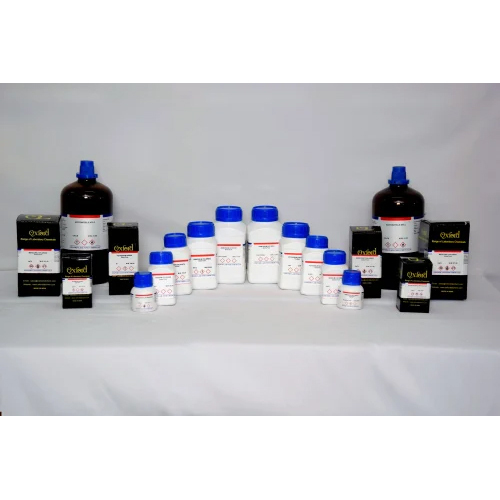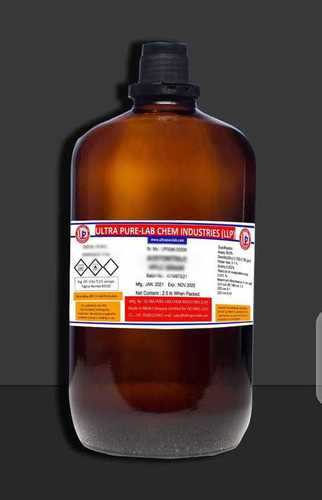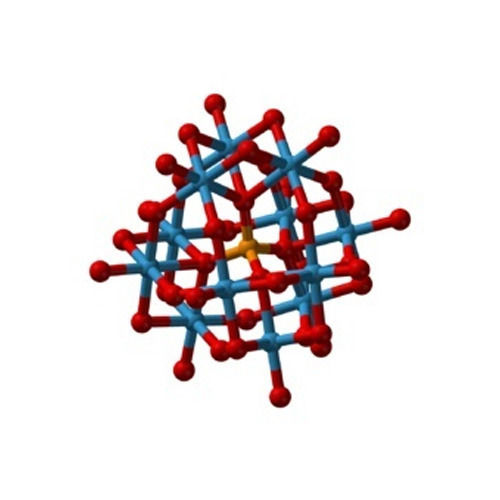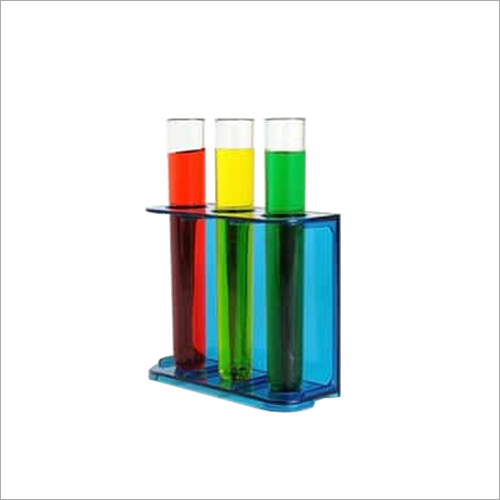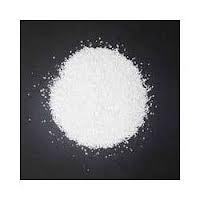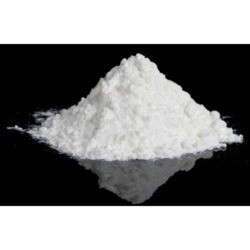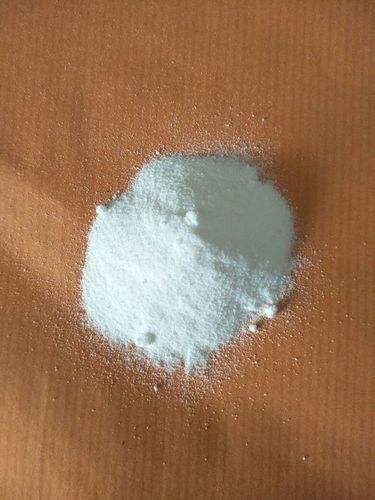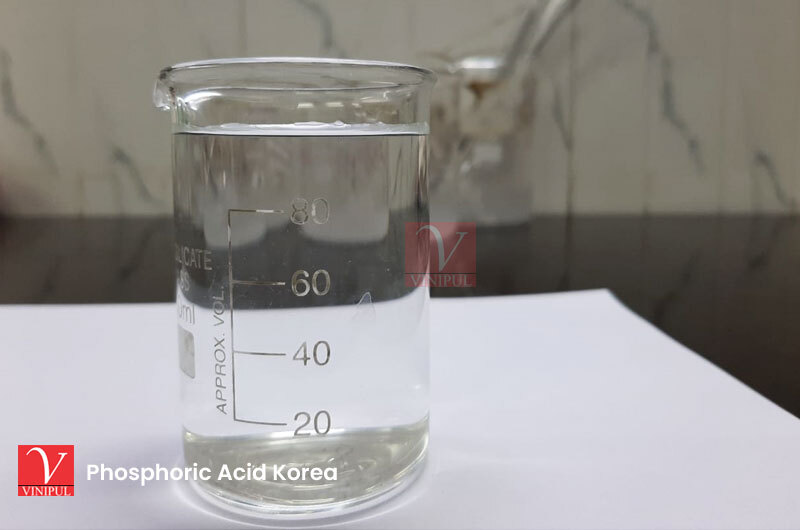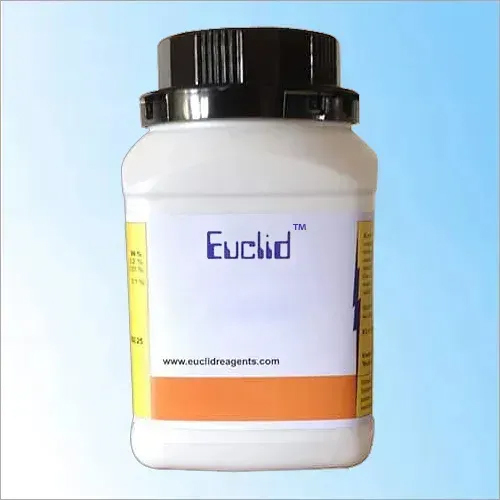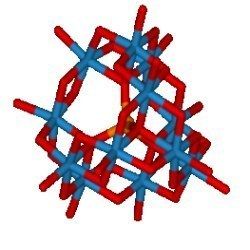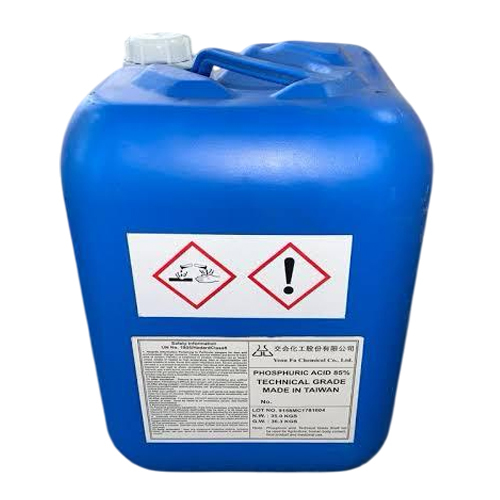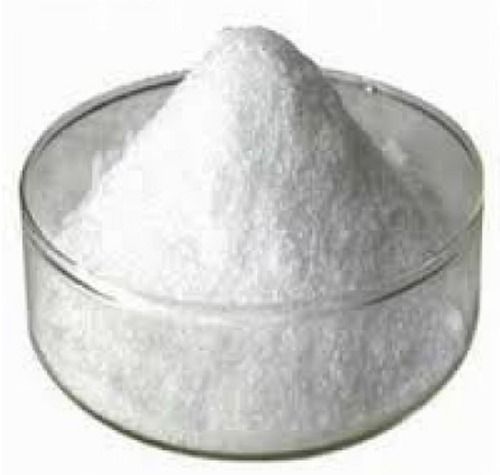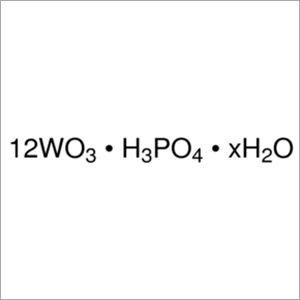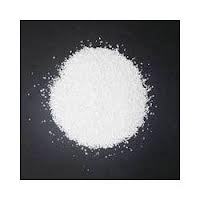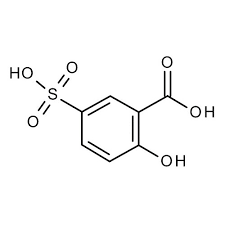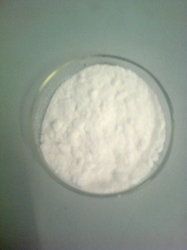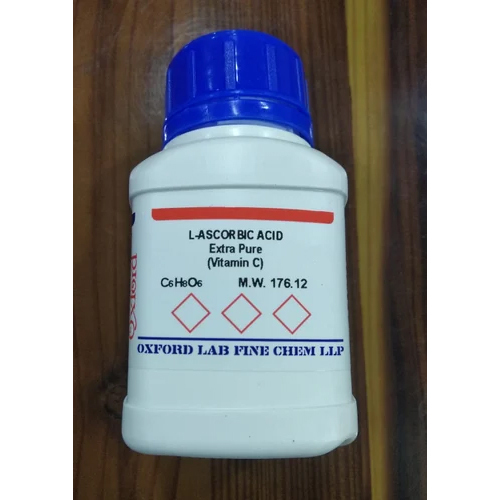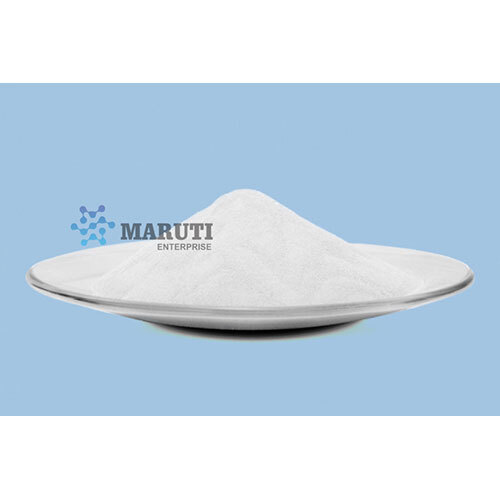Phosphotungstic Acid In Dhule
(142 products)Phosphotungstic Acid - CAS No: 12501-23-4 White or Cream Color Crystalline Powder | UV Resistant Longer Shelf Life
GradeIndustrial Grade
ApplicationDyeing agent
PurityHigh Purity
UsageTextile industry
StorageCool & Dry place
AppearanceWhite or Cream
Phosphotungstic Acid - Molecular Weight 2898.07 g/mol | Water Soluble High Purity Quality
GradeReagent grade
ApplicationAnalytical chemistry
Purity99% min
UsageCatalyst
StorageCool
AppearanceYellow powder
Phosphotungstic Acid Powder - Grade: Industrial
Price: 2900 INR/Kilograms
MOQ50 Kilograms/Kilograms
Physical StatePowder
PurityHigh
Shelf Life5 Years
UsageIndustrial
GradeIndustrial
TypeIndustrial Lab Chemicals
Oxford Lab Fine Chem Llp
Vasai
 Trusted Seller
Trusted Seller Super Seller
Super Seller1 Years
School Lab Chemicals Phosphotungstic Acid Reagent Solution
Price: 1500 INR/Liter
MOQ1 Liter/Liters
TypeSchool Lab Chemicals
Ultra Pure Lab Chem Industries Llp
Vasai
 Trusted Seller
Trusted Seller Premium Seller
Premium Seller5 Years
Phosphotungstic Acid Hydrate - H3PO4.12(WO3).H2O Molecular Weight of 2898.07 | Reliable High-Quality & Pure Water-Soluble Compound
MOQ25 Kilograms/Kilograms
Properties25
Tirupati Industries (india) Limited
Khalapur, Khopoli
PHOSPHOTUNGSTIC ACID Extra Pure - CAS 12027-38-3 >99% Purity Yellowish Appearance Water Soluble H3PW12O40 Molecular Formula Catalysis & Lab Applications
CAS Number12027-38-3
Purity>99%
AppearanceYellowish
SolubilityWater soluble
Molecular FormulaH3PW12O40
Molecular Weight2879.9 g/mol
A. B. Enterprises
Ghatkopar East, Mumbai
 Super Bonanza
Super Bonanza Trusted Seller
Trusted Seller21 Years
Phosphotungstic Acid - Industrial Grade 99% Purity Crystalline Powder | CAS No 12501-23-4 Soluble in Water and Ethanol Staining Agent and Analytical Reagent
Molecular FormulaH3PW12O40
Other NamesTungstophosphoric Acid
Structural FormulaH3[PW12O40]
Molecular Weight2880.05 g/mol
Density4.13 Gram per cubic centimeter(g/cm3)
PoisonousNo
Forbes Pharmaceuticals
Mumbai
 Trusted Seller
Trusted Seller Super Premium
Super Premium16 Years
 Super Premium
Super PremiumPhosphotungstic Acid Density: 960 Kilogram Per Cubic Meter (Kg/M3)
Price: 5300 INR/Kilograms
MOQ25 Kilograms/Kilograms
Density960 Kilogram per cubic meter (kg/m3)
Molecular FormulaH3PW12O40
FormPowder
Melting Point89 i?1/2C
GradeOther Bio-Tech Grade
UsageFor Laboratory and Industrial
Indian Platinum Private Limited
Vile Parle West, Mumbai
 Trusted Seller
Trusted Seller Super Seller
Super Seller16 Years
Phospho Tungstic Acid - Application: Lab Chemicals
Price: 7800 INR/Kilograms
MOQ25 Kilograms/Kilograms
PropertiesPhosphotungstic acid can be prepared by the reaction of sodium tungstate Na2WO4.2H2O with phosphoric acid H3PO4 acidified with hydrochloric acid HCl.[2]Phosphotungstic acid solutions decompose as the pH is increased. A step-wise decomposition has been determined and the approximate compositions at various pH values are as follows:[8]pH principal components1.0 [PW12O40]3a^'2.2 [PW12O40]3a^' [P2W21O71]6a^' [PW11O39]7a^'3.5 [PW12O40]3a^' [P2W21O71]6a^' [PW11O39]7a^' [P2W18O62]6a^' [P2W19O67]10a^'5.4 [P2W21O71]6a^' [PW11O39]7a^' [P2W18O62]6a^'7.3 [PW9O34]9a^'8.3 PO43a^' WO42a^'The species [PW11O39]7a^' is a lacunary or defective Keggin ion. The [P2W18O62]6a^' has a Dawson structure. At pH less than 8 the presence of ethanol or acetone stabilises the anion [PW12O40]3a^' reducing decomposition.[8]Tungstophosphoric acid is thermally stable up to 400 AdegC and is more stable than the analogous silicotungstic acid H4SiW12O40.[9]Large quantities of polar molecules such as pyridine are absorbed into the bulk phase and not simply on the surface. Solid state NMR studies of ethanol absorbed in the bulk phase show that both protonated dimers ((C2H5OH)2H+) and monomers (C2H5OH2+) are present.Phosphotungstic acid is less sensitive to reduction than phosphomolybdic acid. Reduction with uric acid or iron(II) sulfate produces a brown coloured compound. the related silicotungstic acid when reduced forms a similar brown compound where one of the four W3 units in the Keggin structure becomes a metal-metal bonded cluster of three edge shared W(IV) octahedra.[10]Phosphotungstic acid is the strongest of heteropolyacids. Its conjugate base is the PW12O403a^' anion.[11] Its acidity in acetic acid has been investigated and shows that the three protons dissociate independently rather than sequentially and the acid sites are of the same strength.[12] One estimate of the acidity is that the solid has an acidity stronger than H0 =a^'13.16[9] which would qualify the compound as a superacid. This acidic strength means that even at low pH the acid is fully dissociated.
CAS No1343-93-7
UsageCatalystIn common with the other heteropolyacids phosphotungstic acid is a catalyst and its high acidity and thermal stability make it a catalyst of choice according to some researchers.[13] It is in solution as a homogeneous catalyst and as a heterogeneous catalyst "supported" on a substrate e.g. alumina silica. Some acid catalysed reactions include:the homogeneous catalysis of the hydrolysis of propene to give 2-propanolthe homogeneous catalysis of the Prins reactionthe heterogeneous catalysis of the dehydration of 2-propanol to propene and methanol to hydrocarbons.Dyeing and pigmentsPhosphotungstic acid has been used to precipitate different types of dyes as "lakes".[14] Examples are basic dyes and triphenylmethane dyes e.g. pararosaniline derivatives.HistologyPhosphotungstic acid is used in histology for staining specimens as a component of phosphotungstic acid haematoxylin PTAH and aEURoetrichromeaEUR reagents and as a negative stain for imaging by a transmission electron microscope.Phosphotungstic acid haematoxylin (PTAH)Mallory described the reagent now generally known as PTAH in 1897.[16] PTAH stains tissues either reddish brown or blue depending on their type. This property of simultaneously staining two different colours is different from other haematoxylin reagents e.g. alum-haematoxylin. The role of phosphotungstic acid and the mechanism of staining is not fully understood. Interestingly the active component of haematoxylin is the oxidised form haematin although this rarely acknowledged in the literature which refer to haematoxylin staining. Phosphotungstic acid forms a lake with haematin.[17] The make aEUR"up of the reagent is uncertain examination of a year old sample showed there to be three coloured components blue red and yellow.[18] These were not identified. Some investigations of aEURoemodelaEUR systems reacting various compounds such as amino acids purines pyrimidines and amines with PTAH show that they give rise to different colours.Trichrome reagentsIn these reagents two or three basic dyes are used with phosphotungstic acid in either a one step or multi-stage procedure. These reagents colour different tissue types different colours. Again the mechanism of staining is not fully understood. Some explanations include the proposal that phosphotungstic acid acts as a mordant to bind the dye to the tissue[20] or that alternatively it binds to tissue blocking it to dye molecules.Negative stainingAdsorption onto tissue or the surface of viruses and its electron density are the bases of phosphotungstic acids action as a negative stain. This electron density arises from the presence of the 12 tungsten atoms which each have an atomic number of 74. The mechanism of the adsorption onto tissue has been proposed as being electrostatic rather than involving hydrogen bonding as adsorption is not affected by pH.AnalysisThe potassium salt is only slightly soluble unlike most other phosphotungstate salts and has been proposed as a method for the gravimetric analysis of potassium.Precipitation of proteinsIn a number of analytical procedures one of the roles of phosphotungstic acid is to precipitate out proteins. It has been termed a "universal" precipitant for polar proteins.[23] Further studies showed that no precipitation occurred with I+--amino groups but did occur with guanidino Iu-amino and imidazole groups.MedicinalVery little work appears to have been carried out in this area. One example relates to liver necrosis in rats.Composite proton exchange membranesThe heteropoly acids including phosphotungstic acid are being investigated as materials in composite proton exchange membranes such as Nafion. The interest lies in the potential of these composite materials in the manufacture of fuel cells as they have improved operating characteristics
StorageRoom Temperature
Molecular Weight2880.2 g/mol Kilograms (kg)
Shelf Life5 Years
Evans Chem India Pvt. Ltd.
Vile Parle West, Mumbai
 Trusted Seller
Trusted Seller Super Seller
Super Seller11 Years
Phosphoric Acid Korea - 85% Purity Liquid Appearance CAS No: 7664-38-2 EINECS No: 231-633-2 Inorganic Acid Versatile Applications in Agriculture Pharmaceuticals and Food Processing
Price: 150 INR/Kilograms
MOQ20 Kilograms/Kilograms
Molecular FormulaH3PO4
ClassificationInorganic Acids
Inorganic Acid TypesPhosphoric Acid
Purity99%
Appearanceliquid
CAS No7664-38-2
Vinipul Inorganics Private Limited
Chembur, Mumbai
 Trusted Seller
Trusted Seller17 Years
Phospho Tungstic Acid Grade: Reagent
MOQ25 Kilograms/Kilograms
Physical FormPowder
Purity99%
GradeReagent
Molecular Weight2880.2 Milligram (mg)
Molecular FormulaH3PW12O40
StorageRoom Temperature
Yogi Dye Chem Industries
Ghatkopar East, Mumbai
 Trusted Seller
Trusted Seller16 Years
PHOSPHOTUNGSTIC ACID AR
Purity99.9%
FormPowder
PackagingWide-mouth jar
CAS Number12027-38-2
Molecular Weight2879.84 g/mol
SolubilitySoluble in water
FAQs Related to Phosphotungstic Acid In Dhule
How many phosphotungstic acid products are available in Dhule?
Where can I find phosphotungstic acid nearby Dhule?
Can I trust the Dhule Based Phosphotungstic Acid suppliers listed on Tradeindia?
How many Dhule based Phosphotungstic Acid manufacturers are there?
What is the price range of phosphotungstic acid in Dhule?
| Company Name | Currency | Product Name | Price |
|---|---|---|---|
| - | - | Phosphotungstic Acid Powder | 2900 INR (Approx.) |
| - | - | Phosphotungstic Acid Reagent solution | 1500 INR (Approx.) |
| - | - | PHOSPHOTUNGSTIC ACID Extra Pure | 11550.00 INR (Approx.) |
| - | - | Phosphotungstic Acid | 5300 INR (Approx.) |
| - | - | Phospho Tungstic Acid | 7800 INR (Approx.) |
| - | - | Phosphoric Acid Korea | 150 INR (Approx.) |
| - | - | PHOSPHOTUNGSTIC ACID AR | 1-10 INR (Approx.) |
| - | - | Phosphoric Acid | 70.0 INR (Approx.) |
| - | - | Phosphotungstic Acid Anhydrous (PTA) | 5200.0 INR (Approx.) |
What is the delivery time for phosphotungstic acid in Dhule?
How many trusted sellers are available for Phosphotungstic Acid in Dhule?
Phosphotungstic Acid
Purity99%
AppearanceBrown
PackagingAmber glass bottle
SolubilityWater soluble
Molecular weight2880 g/mol
CAS number12027-38-4
Phosphotungstic Acid Hydrate - H3PO4.12(WO3).H2O Molecular Weight 2898.07 | Customizable Formulations Soluble in Water
GradeReagent Grade
ApplicationAnalytical Chemistry
Purity99.9%
UsageCatalyst
StorageCool & Dry Place
AppearanceYellowish
Phosphotungstic Acid(Pta)
GradeReagent grade
ApplicationAnalytical reagent
Purity99.9%
UsageLaboratory
StorageStore in a cool and dry place
AppearanceColorless-grayish or slightly yellow-green crystals
Phosphoric Acid - Application: Industrial
Price: 70.0 INR/Kilograms
MOQ10000 Kilograms/Kilograms
StorageRoom Temperature
Purity96% - 99%
SmellSharp
FormLiquid
SolubilityHigh
ApplicationIndustrial
Phosphotungstic Acid Powder
GradeIndustrial Grade
ApplicationIndustrial
PurityHigh Purity
UsageWide range of applications
StorageStore in a cool
AppearanceWhite powder
Phosphotungstic Acid Lr/Ar Cas No: 12501-23-4
MOQ1 Kilograms/Kilograms
Physical FormPowder
Appearancecolorless-grayish or slightly yellow-green crystals
Solubilitysoluble in water (200 g/100 ml)
TasteOdorless
Other NamesPhosphotungstic acid hydrate
CAS No12501-23-4
Phosphotungstic Acid - White Fine Crystals Assay 99% Minimum Maximum Impurities Compliant
GradeReagent Grade
ApplicationCatalyst
Purity99% Min
UsageChemical synthesis
StorageSealed container
AppearanceWhite fine crystals
Phospho Tungstic Acid
GradeLab Grade
ApplicationAnalytical Chemistry
PurityHigh Purity
UsageResearch & Development
StorageStore in a cool
AppearanceWhite crystalline solid
Phospho Tungstic Acid Hydrate
FeaturesHigh purity Strong oxidizing agent Catalyst Reagent Analytical reagent
Phosphotungstic Acid
CAS Number12501-23-4
Molecular Weight2880.2 gm/mol
Molecular FormulaH3PW12O40
AppearanceWhite Powder
Melting Point89-92°C
SolubilityWater Soluble
AR and ACS Phosphotungstic Acid
GradeAR and ACS
ApplicationIndustrial and laboratory
Purity99%
UsageDye precipitation
StorageDry
AppearanceWhite powder
L Ascorbic Acid Sodium Salt - Application: Lab Use
Price: 2600 INR/Kilograms
MOQ10 Kilograms/Kilograms
Molecular Weight176.12 g/mol Grams (g)
Molecular FormulaC6H8O6
GradeIndustrial Grade
Purity99%
ApplicationLab Use
CAS No50-81-7
L Ascorbic Acid Sodium Salt - Grade: Industrial Grade
Price: 2600 INR/Kilograms
MOQ50 Kilograms/Kilograms
SmellNormal Smell
ClassificationOrganic Acids
Organic Acid TypesCarboxylic Acid
GradeIndustrial Grade
PurityHigh
UsageIndustrial
Phosphotungstic Acid Anhydrous (Pta) - Cas No: 12067-99-1
Price: 5200.0 INR/Kilograms
MOQ25 Kilograms/Kilograms
Molecular FormulaH3[P(W3O10)4]
SolubilityVery soluble in water & alcohols
Ph Level1.0 2.5
FormPowder
Purity98.0%
CAS No12067-99-1
Maruti Enterprise
Junagadh
 Trusted Seller
Trusted Seller Premium Seller
Premium Seller7 Years
Popular Categories in Dhule
Popular Products



